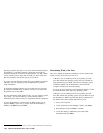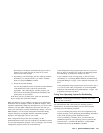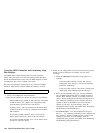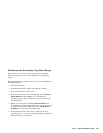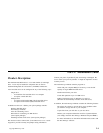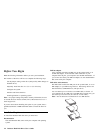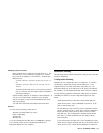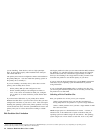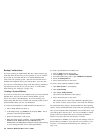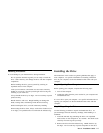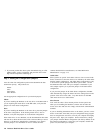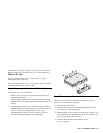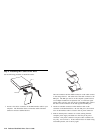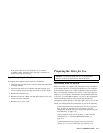
you are installing. Some devices, such as a high speed tape
drive, do not operate properly when installed on the same port
with a hard disk drive.
The primary drive must be configured as master and installed on
the primary IDE port. You must install the operating system on
the primary drive, normally C:.
If you are installing a secondary drive (a drive that is not the
primary), the secondary drive can be:
– On the primary IDE port and configured as slave
– On the secondary IDE port and configured as master or
slave. If two drives are installed on either port, configure
one as master or as master with slave present and the other
as slave.
If you have had a SCSI drive as your primary drive and the
Deskstar hard disk drive is your first ATA device, then you must
configure the ATA drive as your new C: drive. This will require
installing the operating system on the primary partition or moving
it from the old boot drive, since the system BIOS will look to the
primary ATA port for a boot device before looking at a SCSI
port.
Disk Partition Size Limitation
The largest partition size that you can create under the DOS, Windows
95, Windows 3.x, and OS/2 operating systems that use the 16-bit file
allocation table (FAT-16) conventions is approximately 2.14 GB.
15
Since you are installing a drive larger than 2.14 GB, you must create
more than one partition to use the full capacity of your drive.
If you are using the high performance file system (HPFS) conventions
with OS/2, see your operating system documentation for partition
sizing information.
If you use the DOS-based FDISK utility to partition your drive and
you are using the maximum partition size of 2.14 GB, you must enter
the partition size as 2047 MB.
Selecting a Drive Partition Size
Base your partition size on how you use your computer.
Select a larger partition size if you want the convenience of
having many files in one partition or if you have large databases.
Select a smaller partition size if you have a large number of small
files such as text files.
FDISK assigns space on a hard disk drive in clusters. A cluster, or
allocation unit, is the smallest unit of space on the drive that your
operating system can address using FAT conventions. The operating
system assigns one or more clusters to each file. Even a very small
15
When referring to hard-disk-drive-capacity, GB means 1000000000 bytes; total user-accessible capacity may vary depending on operating system.
16
When referring to binary memory, MB means 1048576 bytes.
2-4 Deskstar Hard Disk Drive User’s Guide



